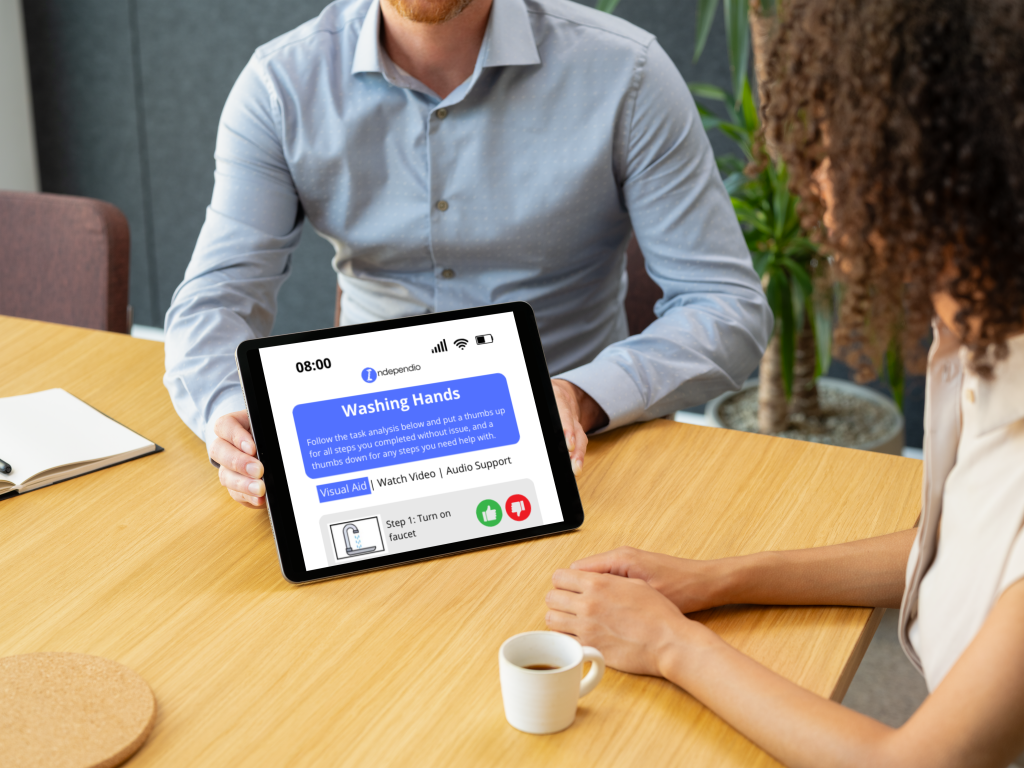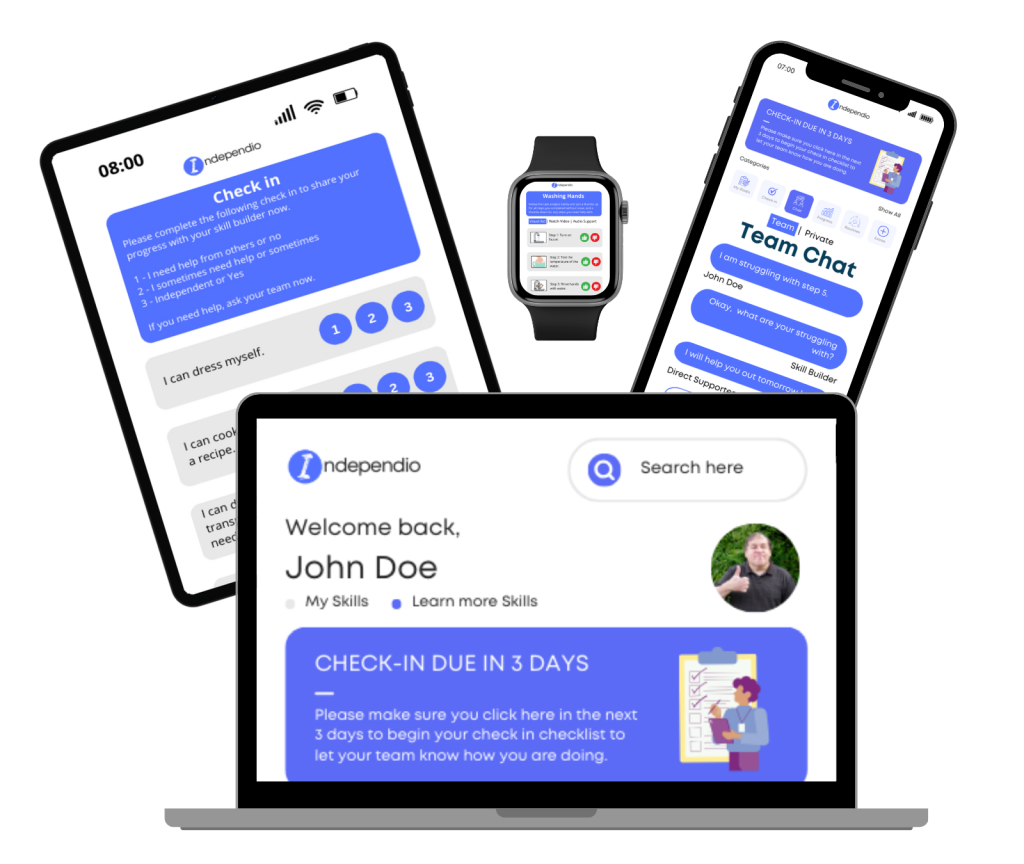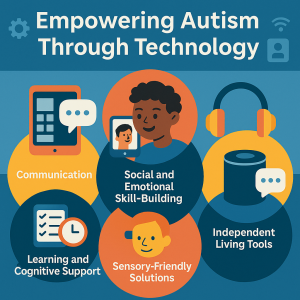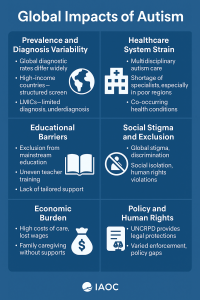In today’s tech-forward world, digital assistive technology (DAT) is opening new doors for autistic individuals, offering personalized support that empowers communication, learning, and independent living. From communication apps to sensory tools, these innovations are helping neurodivergent users navigate their environments with greater confidence and autonomy. These technologies range from simple visual aids to sophisticated applications and devices, each tailored to meet diverse needs.
Communication Breakthroughs: Giving Voice to All
Many autistic individuals experience communication challenges, ranging from difficulty with verbal expression to complete non-speaking profiles. Fortunately, a variety of Augmentative and Alternative Communication (AAC) tools have made communication more accessible than ever.
- Picture Exchange Communication System (PECS): Enables individuals to convey thoughts using images—ideal for early learners or those with limited verbal ability.
🔗 Learn more about PECS - Spoken AAC App: A predictive text-to-speech app offering customizable voices for non-verbal users.
🔗 About the Spoken App - Speech-Generating Devices (SGDs): Devices like iPads with apps such as Proloquo2Go are giving many non-speaking individuals the ability to communicate fluently.
🔗 How iPads Are Helping Autistic Kids Speak
Learning and Cognitive Support: Tools for Success
Digital tools are helping autistic individuals thrive in educational and everyday settings by breaking down tasks and routines.
Mind-Mapping Software: Tools like Lucidchart visually organize thoughts, which is particularly helpful for individuals with strong visual learning styles.
🔗 More Cognitive Tools for Autism
Visual Schedules & Timers: Help users understand daily routines, transitions, and timing expectations.
🔗 Visual Thinking in Autism
Task Management Apps: Enable step-by-step task completion, supporting executive functioning and independence.
🔗 Assistive Tech for Autism
Social and Emotional Skill-Building
Social communication can be especially difficult for many autistic individuals. Fortunately, emerging tech is helping bridge that gap.
- Video Modeling: Shows scripted social interactions that users can watch and imitate in real-life scenarios.
🔗 Video Modeling and More - Augmented Reality (AR) Tools: Like AEGIS, these use facial recognition technology to teach emotional identification and facial expression interpretation.
🔗 Read the AEGIS Study
Sensory sensitivities are common among autistic individuals, and digital solutions can help create more comfortable environments.
- Noise-Canceling Headphones: Mitigate overstimulation in noisy environments.
🔗 Choosing Autism Noise Canceling Headphones - Customizable Device Interfaces: Adjustable color, font, and layout settings help tailor digital environments to individual sensory needs.
🔗 Sensory-Friendly Design: Creating Digital Spaces that Support Autistic Users
Independent Living Tools
From navigation to scheduling and safety, these technologies help autistic individuals live more autonomously.
- Smart Home Integration: Devices like voice assistants can help manage routines, alarms, and reminders with simple voice commands.
🔗 Smart Home Tech to Support Autism Sensory Needs - GPS Wearables: Provide peace of mind to families with safety concerns, especially for individuals prone to wandering.

Barriers to Access: Still Work to Do
Despite the progress, access to assistive technology isn’t universal. Financial costs, lack of training, and limited awareness in schools or care settings are persistent barriers. But momentum is building—more insurance plans are beginning to cover AT, and many school districts are integrating these tools into their Individualized Education Plans (IEPs).
Looking Ahead
Digital assistive technologies are not just helpful—they’re transformative. For autistic individuals, these tools represent greater independence, communication, and quality of life. As tech advances and becomes more accessible, the future of neurodiversity support looks brighter than ever.
References & Resources to learn more:
- Technology & Autism – AutismSpeaks
- Picture Communication Symbols – WikiPedia
- Assistive Technology Devices for Persons With Autism – Enabling Guide by SG Enable
- Using an iPad to help non-verbal children speak – WIRED
- Smart Home Tech for Autism Sensory Needs – My Team ABA
- Tech Tools for Autism – Achieving Stars Therapy
- Choosing the Right Noise Cancelling Headphones for Autism: Important Facts – SoundCore
- Top Communication Tools for Autism Support – Supportive Care ABA
- Empowering Comfort: Smart Home Innovations for Autism and Energy Efficiency – Above and Beyond Therapy
- Sensory-Friendly Design: Creating Digital Spaces that Support Autistic Users – Accessibility
- Silence and Focus: Noise-Canceling Headphones as Assistive Tools for Cognitive Disabilities – Perficient
- Smart Home Tech to Support Autism Sensory Needs – Total Care ABA
- Sensory Headphones from Amazon
- The Best Autism-Friendly Technology Tools – Gold Star Rehabilitation
- Assistive Tech – Different Roads
- How Assistive Technology works for people with Autism – Recite Me








